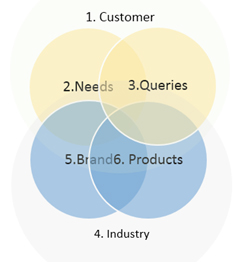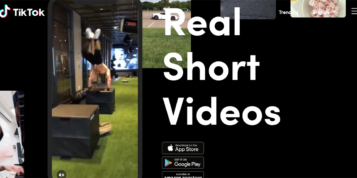Twitter is looking to “enhance” its capabilities and follow suit with the evolving industry. It’s still in the planning stage, however the CEO of Twitter, Dick Costolo, has openly communicated that the idea is to create the ability to “follow along with Twitter in DVR mode”, which effectively will provide the ability to go back in time to see conversations and spikes in communication around events.
The platform wants to make its experience of live events better, with Costolo stating: “That ability to track and monitor the moments within an event either as they happen or to catch up with them, is something we want to enhance.”
Once this new enhanced Twitter does become available I believe it will increase the amount of regular Twitter users, with the platform becoming synonymous with – and used alongside – television coverage, imbedding itself within our personal habits.
With this around the corner, how can we plan to develop our brands’ use of Twitter to not only capture and engage with potential clients, but to position themselves – and us as their agency – well for the future advancements?
Twitter Strategy in 3 stages of development
At the start of every marketing strategy is the customer – and potential customer – and their queries, as well as the opportunity to spread the brand wider within the industry, giving consumers or businesses access to products and services which provide solutions to their needs. The below diagram shows the interaction between these properties, all of which marketers need a good understanding of before embarking upon any social media campaign or strategy.
 Your people / potential customers
Your people / potential customers- Their needs
- Their queries
- Your industry
- Your brand
- Your product
Once you have a thorough understanding of these groups: demographic, sentiment, queries, news, needs and products/services, you can effectively carry out a Twitter strategy, developed in three stages. These three stages should be the main aims of using the platform: to follow, create and engage with potential customers in order to drive increasing awareness of the brand, products and services, and establish yourself as an industry thought leader.
Below are a few steps to getting these three stages right.
1. Follow:
- Your customers and potential customers. This will make them feel wanted and enable them to follow you back, keeping abreast of all your activity
- Your brand, products and hot topics
- Industry leaders with similar interests, that follow similar brands or groups and that are interested in the same kind of news or topics
- People interested in or attending relevant events – whether they are events your brand is holding, involved in, or just those relating to a competitor brand or service
- People interested in the sector and industry leaders
With a little SWOT analysis, careful planning and research you can successfully target and inspire key consumers and decision makers
2. Create:
- Event information, updates, behind the scenes coverage
- On topic competitions, build value and interest
- Content that is useful and relevant to your customers: tips, how to articles, answers to common questions etc.
- Direct people to additional resources, further information, explanations and interesting hot topic research
- Offer your insight, help and expertise and become a thought leader in your industry
- Share your opinions through a twitter personality with views on your industry, events and news
In short, take your Inspiration and run with it!
3. Engage:
- With your followers, encourage communication and share your opinions
- Answer questions, respond to comments about your brand
- Respond to comments or raised issues, provide information and guidance
- Jump in to the conversation and be transparent, but remember you must add value!
- Set up tweet-ups and talk to attendees; ask and answer questions
- Check replies and DMs and provide information where necessary
- Know your followers; thank them for support and get them involved with your cause
Be passionate: show yourself, give an identity and ultimately be the brand champion
I regularly see bad practice and mistakes from brands on Twitter, so here are a few Twitter precaution tips to keep you on the straight and narrow:
# Never add client accounts to personal publishing tools – this is a disaster waiting to happen!
# Always log out. This will safeguard against accidental posts, unauthorised shares and other general errors
# When scheduling future posts, double check for accuracy of both text and timings before and after
# Always double check the destination of shortened URL’s
# Always double check live posts before and immediately after. If there is an error, acknowledge, delete and correct straight away
I’d be interested to hear what you have done which has given the best ROE (return on effort) and what the staple ingredients are in the Twitter strategies you create for your clients. Has there been something that has surprised you or something that you have learnt that is now your not-so secret “secret weapon”?

 Your people / potential customers
Your people / potential customers




